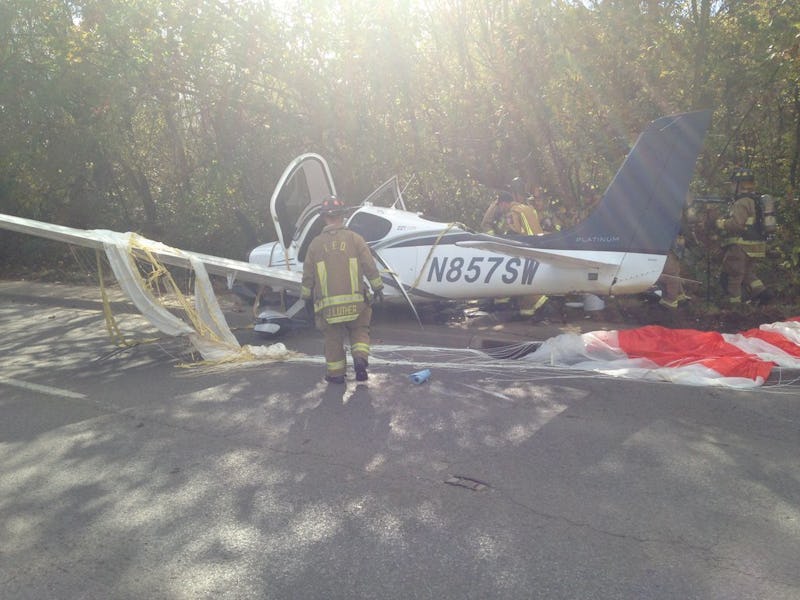Whole-Plane Parachute Caught on Video During Safe Landing in Arkansas
Watch vide of the rare event.

Earlier today, a plane crashed in Fayetteville, Arkansas. All three occupants were safe, however, because a whole-plane parachute was deployed. Perhaps unremarkably, the whole event was captured on someone’s iPhone:
According to the Fayetteville Police Department, the plane, which was on its way to Waco, Texas, experienced oil pressure problems upon landing.
The plane is a Cirrus SR22T, a fixed-wing, single-engine plane. According to Cirrus, the aircraft comes with the Cirrus Airframe Parachute System (CAPS): “the parachute system is designed to protect occupants in the event of an emergency by lowering the aircraft to the ground after deployment.”
There are photos and videos of the aftermath, as well.
In case of emergency, as happened today, activating the CAPS system “deploys a solid-fuel rocket out a hatch that covers the concealed compartment where the parachute is stored. As the rocket carries the parachute rearward from the back of the airplane, the embedded CAPS airplane harness straps release from the fuselage. Within seconds, the 65′ diameter canopy will unfurl, controlling the aircraft rate of descent. The final landing is absorbed by the specialized landing gear, a roll cage and Cirrus Energy Absorbing Technology (CEAT™) seats.”
The plane’s pilot was Bill Simon, the former CEO of Walmart who stepped down in 2014. Earlier this year, Simon began working on Jeb Bush’s presidential campaign as the person in charge of Bush’s policy operation.
Here’s a video of a Cirrus SR-22 actually deploying a whole-plane parachute during a different incident in January 2015 in Hawaii:
The whole-plane parachute technology has been around for a long time. Back in 1929, Roscoe Turner, a Hollywood stunt pilot, deployed one on a 2,800-pound plane just to entertain 15,000 spectators in California.
Later, in 1975, Boris Popov fell 400 feet from a hang glider without a parachute. He survived by landing in a lake, but used his near-tragedy to start the parachute-producer Ballistic Recovery Systems in 1980. Cirrus even used BRS Aerospace’s parachutes before creating its own CAPS system.
BRS whole-plane parachutes have saved 324 lives. CAPS has been deployed 53 times, saving 107 lives.